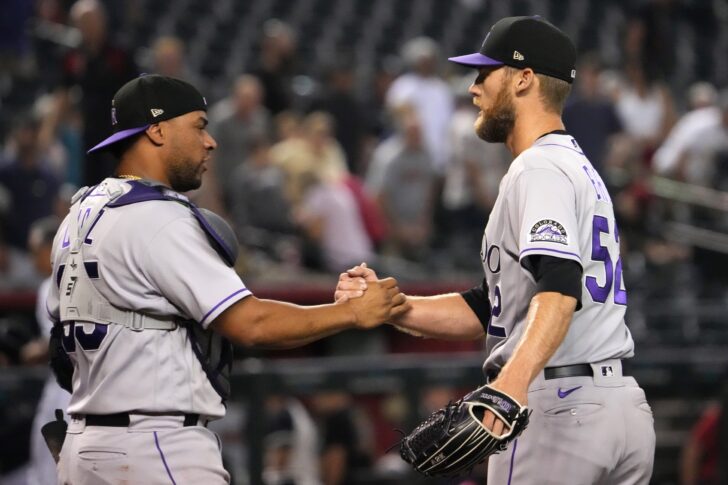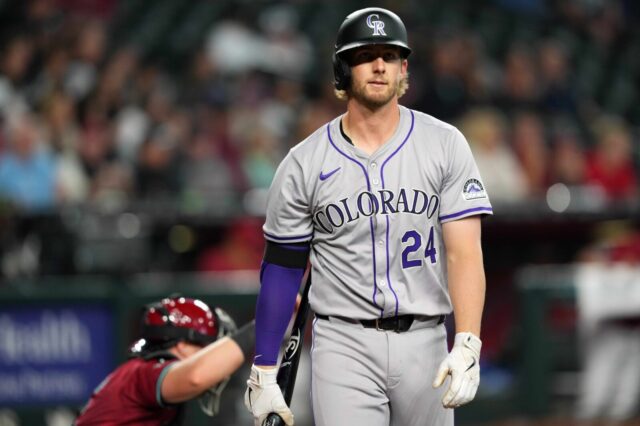The Colorado Rockies signed their closer, Daniel Bard, to an extension prompting no shortage of takes across a multitude of publications and all over social media.
There’s an everlasting argument over a team that has openly and regularly said they will never do a full teardown and rebuild, and whether or not they should abandon that in favor of the far more common modern tactic of being bad on purpose for several years in hopes of being good thereafter.
The Cubs and Astros have ridden such a philosophy all the way to World Series titles while plenty of other teams (Pirates, Mariners, Reds, Orioles, etc) have shown over the last two decades how easy it is to just be perpetually rebuilding, always looking to the future that never comes and never fighting for the now.
But while all of that is an important part of the framing of the Bard move, it is also not the entire conversation.
Holding an individual transaction responsible for decades worth of frustrating philosophies is, of course, silly on the surface, regardless of how easy it seems to do in this case.
You’ve all read or heard the easy and obvious critique. Bard is old. The Rockies are bad. Therefore, trade. But there are plenty of other factors that need to be taken into consideration and they are best understood by stepping away from the emotions and narratives and focusing on the verifiable, objective facts.
So let’s take a look at Daniel Bard and his new contract, by the numbers:
2 – The number of years the deal covers. This gives the Rockies some flexibility should the team remain a disappointment, but Bard remains productive. They can always trade him at any point during these two years if they are still spinning their wheels. It also isn’t so long that if he falls apart, they are stuck with him in the long term.
$9.5 million – The amount Bard will make per season over the two years of the extension.
$5.9 million – According to the latest data, free agent relievers are worth approximately $5.9 million per “win” they provide in terms of WAR. That doesn’t include the Coors Field tax.
2.2 – The amount of WAR Bard has produced so far in 2022, making him worth over $12 million with plenty of time to increase that value.
$4.4 million – Bard’s current contract, meaning that he has been worth nearly triple what he’s getting paid.
37 – The age Bard turned 36 days ago. He will turn 39 near the end of this term.
6 – The number of seasons Bard missed dealing with a myriad of issues before re-debuting with the Rockies in 2020. While it’s tough to say exactly how this has impacted the wear and tear on his arm, and how much it explains that he still easily reaches triple digits, it has to be understood that this isn’t the standard 37-year-old reliever.
97 – That happens to be the percentile rankings for Bard in several key categories, meaning that only three percent of the league has been better than him. Those three categories are fastball velocity, fastball spin, and expected slugging percentage. This is more evidence that the arm has plenty of gas in the tank.
251 – Bard’s current ERA+, suggesting he has been roughly 151 percent better than the league average.
1.86 – Bard’s raw ERA despite pitching half his games at Coors Field.
7 – Bard’s rank among All-Time Rockies in the Save category with 48. A testament both to his excellence over the last three years (well, two of them anyway) and also the Rockies extreme lack of consistency at the position. Bard needs just 14 more Saves to move into fourth place on the list, though he will need to more than earn this contract if he is going to catch Houston Street (84) for third place.
There are plenty of fair critiques about the timing and circumstances of this deal, but the most salient fact is that as long as Bard remains healthy and good, even if he can’t remain elite, it’s a good deal for the club.
If they aren’t good next year, the same, probably even better trade routes will be open. But if they can right the ship, through whatever means, they are going to need Daniel Bard.



